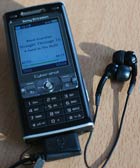



Exposure to excessive noise or sound can result in hearing loss.
To protect workers, limits have been set for the levels of noise allowed in the workplace.
Background noises to which the general public is exposed - such as those from traffic, construction, aircrafts or from the neighbourhood - can be very irritating but are in most cases not loud enough to harm hearing.
Thirty years ago, exposure to noise at work was considered a significantly greater threat to hearing than leisure noise. However, since then there have been huge changes in the patterns of sound exposure. Increasing numbers of young people are exposed to loud sounds in their leisure time while exposure at work has decreased. Sounds such as music, if played very loudly, can be as dangerous for hearing as industrial noise. The cause for concern is not restricted to music from nightclubs and rock concerts, which can be extremely loud, but also extends to the new generation of personal music players, such as portable MP3 players (and mobile phones including a music playing function). These have become increasingly sophisticated and can play sounds very loudly across a broad range of frequencies, which makes them a cause for public concern. In the last decade, these devices have been used by an increasing proportion of the population. Around 200 million personal music players were sold in Europe between 2004 and 2007. In addition, some 16 to 32 million mobile phones including a MP3 function were sold in 2007 alone and their number is expected to increase considerably in the next few years.
This assessment considers potential health risks linked to the use of personal music players. Its conclusions are based on evidence from a wide variety of sources, including peer-reviewed scientific literature and published reports of institutional, professional, governmental and non-governmental organisations. All publications have been considered and each article has been evaluated and assessed to decide the scientific weight that is to be given. More...
The word ‘noise’ has different meanings in different disciplines. In the world of sound, ‘noise’ is any sound not desired by a certain observer. Working environments such as factories and the transport industry use the terms ‘noise protection’ and ‘noise-induced hearing loss and impairment’ while professional musicians do not use the term ‘noise’ when they refer to exposure to sound at work.
The common practice is to use the term ‘noise’ when talking about health effects, regardless of the noise exposure being wanted, e.g. when using a personal music player; or unwanted, e.g. in the workplace. In this publication, the word ‘sound’ usually implies that the person concerned is listening to a particular sound voluntarily and not as an involuntary bystander.
Sound is caused by vibrations and carries energy as a wave through all media – air, water, walls, windows etc. – but not through a vacuum. . In most situations sound is a complex sum of many signals from different sources which may interfere with each other. Like all waves, a particular sound can be described by a combination of individual frequencies which together form a pattern called the spectrum of the sound waves.
The exposure to sound is determined by many factors which are not always easy to assess. Indoors, these include the size and shape of a room, furniture, as well as the type of materials covering the surfaces and surrounding the source of the sound. More...

This summary is free and ad-free, as is all of our content. You can help us remain free and independant as well as to develop new ways to communicate science by becoming a Patron!